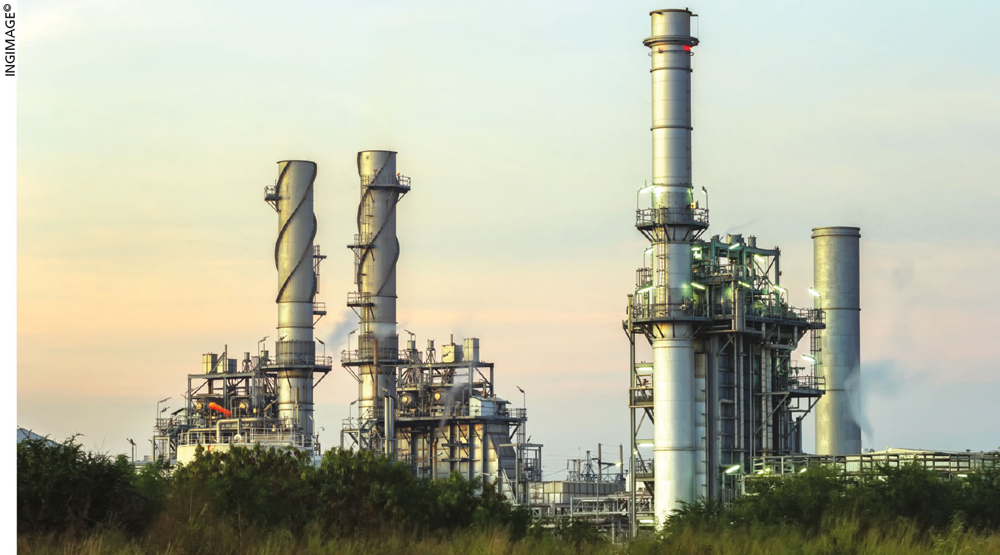ENERGY RESOURCES
ENERGY CHAIN PROPHECIES
Praveen Jaiswal predicts trends in the global energy mix for this mid-century

At the turn of the 20th century, coal and wood were the dominant sources of energy; together, they accounted for over 90 percent of global energy consumption. From 1910 onwards however, the automotive revolution spurred demand for liquid fuels, causing crude oil’s contribution to the global energy supply to double every decade and thus take the top spot in the global energy mix.
Lately, we have been exposed to radical changes affecting the energy chain, It is vital to understand the nature and pace of these changes. The sheer scale of changes that await the world on the energy front is such that even a slight variation in the present mix will have a drastic ripple effect.
Human innovativeness on the subject can ensure access to affordable, reliable and sustainable energy for all. The goal is a major shift toward decarbonisation, which is linked to another mega trend – energy efficiency. Advances in both energy storage and renewables will also create a highly competitive scenario that will drive costs south while accelerating efficiency.
Carbon engineers are toiling to create a very different world where energy decouples from carbon and energy use decreases while the global economy and population continue to grow. This will be a world where energy costs are expected to be relatively low with supply exceeding demand.
The global primary energy supply is likely to peak by around 2030, proving to be a watershed in human history where we will collectively need less energy to satisfy demand. It is estimated that by mid-21st century, the primary energy supply will be split roughly equally between fossil fuels and renewables – this is a wake-up call for all stakeholders of the energy system.
As for the UN Sustainable Development Goal on climate action, it lists parameters for the likes of life below water and life on land, which will have a major impact on the way we consume energy. Succeeding with a rapid energy transition that decouples carbon dioxide emissions from economic development is key to fulfilling all goals that constitute the UN’s Agenda 2030 in the next three decades. As a result, we may witness breakthrough technologies such as nuclear fusion, synthetics and biofuels contributing to our future energy mix.
Numerous studies foresee large shifts in the primary energy supply. Currently, oil and coal represent 29 percent and 28 percent of the global energy supply respectively. By 2020, coal is likely to be overtaken by gas – and in 2034, gas will surpass oil to become the largest energy source.
The fossil fuel share of the world’s primary energy mix is likely to decline from 81 percent at present to 52 percent by 2050. Hydropower, nuclear and biomass are estimated to remain constant, while solar and wind may grow rapidly and represent 27 percent of the world’s primary energy supply by 2050.
But the most dramatic changes in energy use will come from improved energy efficiency especially in renewables.
Behavioural changes will also play a major role particularly in the use of electric vehicles (EVs), which will shift the pace of transition considerably. The world is set to experience a rapid energy transition driven by electrification – and boosted by strong growth in wind and solar power generation – and further decarbonisation of the energy system including a decline in coal, oil and gas.
One thing is certain; oil and gas will continue to retain their presence in the energy mix, together accounting for about 44 percent of the world’s primary energy supply until 2050 (versus 53% today).
Continued investments will be needed for new production capacity. In an energy future with more intense competition and reduced demand for oil,
the oil and gas industry requires an intensified focus on cost efficiency. Gas will eventually emerge as the largest energy source by 2033 and continue to hold its position – although its share of the energy mix is expected to decline from 2040 onwards. Key trends suggest that renewable energy will witness exponential growth and alter the energy sector landscape significantly. Technologies such as solar, EVs and battery storage for industrial use will become increasingly cost competitive, and deployment at the consumer level and in homes will accelerate dramatically.
In the longer term, the impact of current trends in the motor industry could be devastating for the oil industry. The sooner the industry realises this, the better its chances of finding new opportunities for future growth that the automotive industry and renewables intend to create.
Although these predictions raise serious concerns, one may cite the telephone industry, which continues to exist as it did 60 years ago amid developments few would have predicted. It is time to dust the crystal ball and work in sync with technological advancements to make this world safe and sustainable for future generations.



